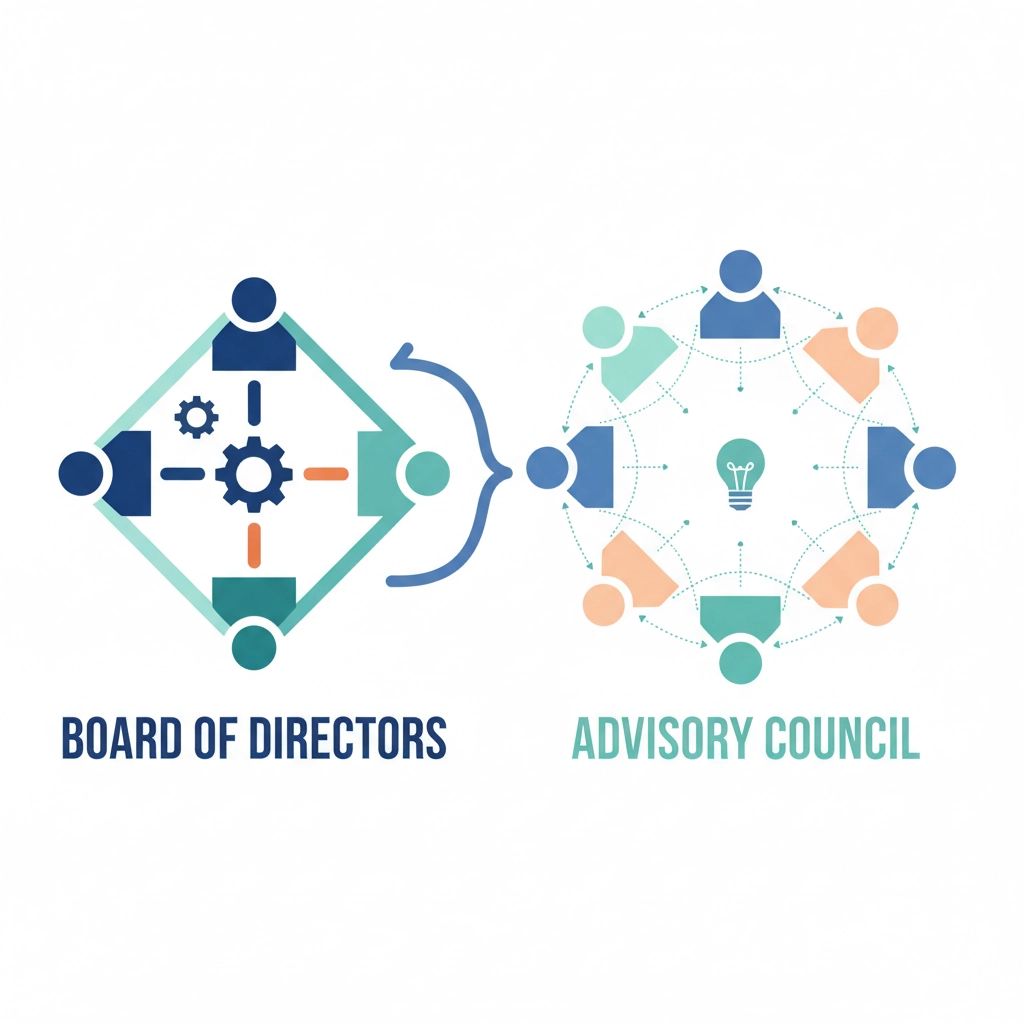How to Choose the Right Board Members for Your Deeptech Startup (And Why It Can Make or Break Your Exit)
Nov 11, 2025
Remember that exit vision post we covered in Deeptech Insider #36? The one about why every deeptech founder needs an endgame? Well, here's the thing most founders miss: your board composition is literally the make-or-break factor in whether that exit vision becomes reality or stays a pipe dream.
I've watched brilliant deeptech and healthtech founders build incredible technology, only to get completely blindsided during acquisition talks because their board looked like a random collection of early investors and friends. Meanwhile, founders who think strategically about board composition from day one? They're the ones fielding multiple acquisition offers and commanding premium valuations.
Let's fix this gap.
Why Your Board Actually Determines Your Exit Success
Most founders think their board exists to provide oversight and governance. Wrong. In deeptech and healthtech, your board is your exit strategy execution team, whether you realize it or not.
Take Sarah, a biotech founder I worked with who developed a breakthrough cancer diagnostic platform. Brilliant science, solid traction, but her board was three early investors and her co-founder. When a major pharma company started acquisition conversations, Sarah's team had zero relationships with key decision-makers at the acquiring company, no regulatory expertise to navigate FDA discussions, and no one who understood pharma deal structures.
Compare that to Marcus, who built an advanced materials startup. His board included a former 3M executive, a regulatory expert from the Department of Energy, and an investor with deep manufacturing networks. When acquisition talks started, his board members were texting directly with C-suite executives at three different potential acquirers. His exit happened 18 months faster and at 3x the valuation Sarah achieved.
The difference? Marcus understood that board selection is exit preparation.

The Deeptech Board Blueprint: What Actually Matters
Start with the science, but think commercial
Your first board members need to understand your underlying technology deeply enough to spot fatal flaws or validate breakthrough potential. But here's where most technical founders go wrong, they prioritize academic credentials over commercialization experience.
You want board members who've actually taken hard science to market. Not just invested in it, not just advised on it, but lived through the valley of death between lab and market. These are the people who know where your technology will break down at scale, what regulatory hurdles you haven't considered, and which potential partners are worth pursuing versus which ones will waste two years of your life.
For healthtech founders, this means finding board members with FDA experience, clinical trial expertise, and relationships within health systems. For materials science or hardware deeptech, you want manufacturing scale-up experience, supply chain expertise, and connections to strategic buyers.
The government connection you can't ignore
Here's something most Silicon Valley advice completely misses: deeptech and healthtech companies intersect with government stakeholders constantly. DARPA funding, FDA approvals, export controls, national security considerations, these aren't edge cases, they're core business realities.
I always tell founders to get at least one board member with serious government experience. Former DOE, DOD, FDA, or NIH executives who understand how these agencies think and can open doors when you need them. This isn't about regulatory capture or playing politics, it's about having someone who can navigate complex approval processes and help you access government funding that your competitors can't touch.
Finding the Right People (Without Getting Played)
The network mapping exercise
Before you even start reaching out to potential board members, map your target acquisition landscape. Who are the top 10 companies that might acquire you in 3-5 years? What government agencies will influence your path to market? Which strategic partners could accelerate your growth?
Now reverse-engineer the connections. Which potential board members have direct relationships with executives at your target acquirers? Who's worked inside the regulatory agencies that will approve your product? Who's built the exact partnerships you need to scale?
This isn't about finding famous names, it's about finding the right connections. Sometimes the former VP of Business Development at your target acquirer is worth more than a famous VC who's never worked in your specific market.

The three-meeting rule
Never add a board member after just one conversation. I've seen too many founders get charmed by impressive resumes and smooth presentations, only to discover their new board member is all talk and no substance.
Meet them three times in different contexts. Once for the formal pitch. Once for a casual coffee where you discuss actual challenges you're facing. Once with your existing team or board members present. Watch how they interact, what questions they ask, and whether they follow through on commitments.
Good board members come to these meetings prepared. They've researched your competitors, thought about your market positioning, and have specific ideas for how they can help. Bad board members show up and ask you to explain everything.
Avoiding the Common Traps
Too many investors, not enough operators
The biggest mistake I see deeptech founders make is loading their board with investors. Yes, you need investor representation, but your board shouldn't be dominated by financial people who've never actually built and scaled hard science companies.
Your ideal board mix: one or two founders, one lead investor, and 2-3 operators with relevant industry experience. The operators are doing the heavy lifting on strategic guidance, partnership development, and exit preparation.
The advisor confusion
Stop trying to put every smart person you meet on your board. Build a proper advisory structure instead. Board members have fiduciary duties, voting rights, and significant time commitments. Advisors provide guidance without the governance overhead.
Use your advisory board for subject matter experts who you consult occasionally. Use your actual board for the 4-6 people who are going to help you

Making It Work: Board Management for Technical Founders
Set clear expectations upfront
The biggest source of board dysfunction comes from misaligned expectations. Be explicit about time commitments, meeting frequency, and how decisions get made.
For early-stage deeptech companies, I recommend quarterly board meetings with monthly updates. As you approach major milestones: regulatory approvals, strategic partnerships, fundraising: increase the frequency.
Document everything. Board members who are juggling multiple commitments need clear agendas, pre-read materials, and follow-up action items. The more organized you are, the more value they can provide.
Use them for what they're best at
Don't treat board meetings like status updates. Your board members should be helping with the hardest strategic decisions you're facing. Partnership strategies, regulatory approaches, competitive positioning, exit timing: these are board-level discussions.
Individual board members should be working their networks on your behalf. The former pharma executive should be introducing you to potential strategic partners. The government relations expert should be helping you navigate agency relationships. Make specific asks and track follow-through.
The Exit Connection: How Board Composition Drives Valuations
Remember that exit vision framework we discussed? Your board is how you execute it.
When acquisition conversations start, acquirers are evaluating your board as much as your technology. They want to see governance maturity, strategic thinking, and connections that can accelerate post-acquisition integration.
A board packed with relevant industry veterans signals that your company is ready for the big leagues. A board that looks like a random collection of early supporters signals that you're still playing startup theater.

The Tactical Next Steps
If you're reading this and realizing your board needs work, start with board refreshment rather than board expansion. Some early board members who were right for getting started might not be right for scaling and exit preparation.
Look at your current board gaps. Missing regulatory expertise? No connections to strategic buyers? No one who's actually scaled a hard science company? Prioritize filling those gaps over adding more generalist investors.
For healthtech founders specifically, regulatory and clinical expertise isn't optional: it's existential. For advanced materials or hardware deeptech, manufacturing and supply chain experience will determine whether you can actually deliver on commercial promises.
The founders winning in today's deeptech landscape aren't necessarily the ones with the best technology: they're the ones who think strategically about every aspect of company building, including board composition.
Your board is your exit strategy execution team. Choose them like your future depends on it, because it does.
Want help thinking through your specific board composition strategy? The frameworks we use at Capital Catalyst have helped dozens of deeptech and healthtech founders build boards that actually drive exit success, not just provide governance theater.